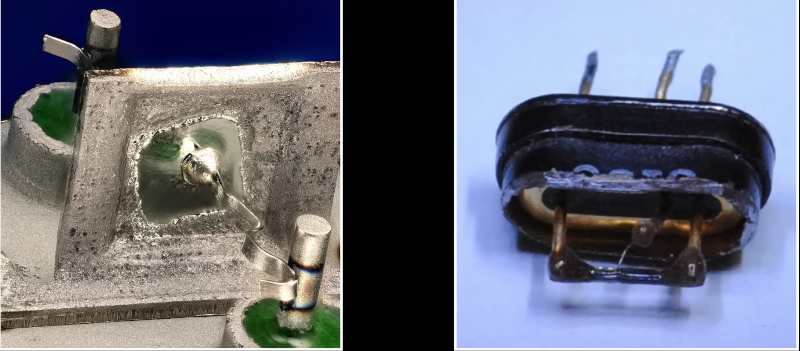How Sony Mastered the Transistor [Hackaday]

When you think of Sony, you probably think of a technology company that’s been around forever. However, as [Asianometry] points out, it really formed in the tough years after World War II. The two people behind the company’s formation were an interesting pair. One of them was a visionary engineer and one was a consummate businessman.
While it is hard to imagine today, securing a license to produce transistors was difficult in the early days. What’s worse is, even with the license, it was not feasible to use the crude devices in a radio.
The devices were poor by today’s standards, and while transistors would work at audio frequencies for hearing aids, getting them to work at AM radio frequencies was a challenge. The Sony founders had to decide whether to use alloy transistors or grown crystal transistors.
Western Electric did not want to share its crystal-growing technology, so in 1954, the team created an alloy transistor. However, it failed to work well at radio frequencies, so they shifted to growing crystals, which seemed more amenable to scaling. One of the team tried using phosphorous and indium doping and created a transistor that could work at higher frequencies. But there was a problem.
Despite the transistor’s superior performance, they couldn’t make another one. Common wisdom at the time was that phosphorus doping was a dead end, but it had worked once. It just took time to find the right way to do it. By 1955, they produced usable transistors, even though the yield was at around 5%.
Texas Instruments beat them to market with a transistor radio, the Regency TR-1, in 1954, but in 1955, they produced the TR-55. Of the five transistors inside, some were alloyed transistors, and some were grown crystals. The factory had to hand-select crystal transistors to make each unit work. The radios were on sale for about 19,000 yen (the TR-1 cost about 50 bucks; recall that in 1954, that was nearly $600 in today’s money). Adjusting for inflation, in today’s money, a Japanese teenager would shell out about $850 for the TR-55.
The TR-55 wasn’t the first Sony radio to have transistors. The TR-52 was a prototype, but it had case problems and never made it into the hands of the public. The radio didn’t make it to the United States until 1957. By then, Texas Instruments, Raytheon, and GE all had radios available, too.
It is a fascinating look into the history of an iconic electronics brand and a window into another world that, honestly, wasn’t that long ago. We couldn’t help but note similarities with Apple, who also had a businessman and engineer combination. Sony would go on to innovate in a number of areas, including optical data storage.

![how-sony-mastered-the-transistor-[hackaday]](https://i0.wp.com/upmytech.com/wp-content/uploads/2024/09/210374-how-sony-mastered-the-transistor-hackaday.png?resize=800%2C351&ssl=1)